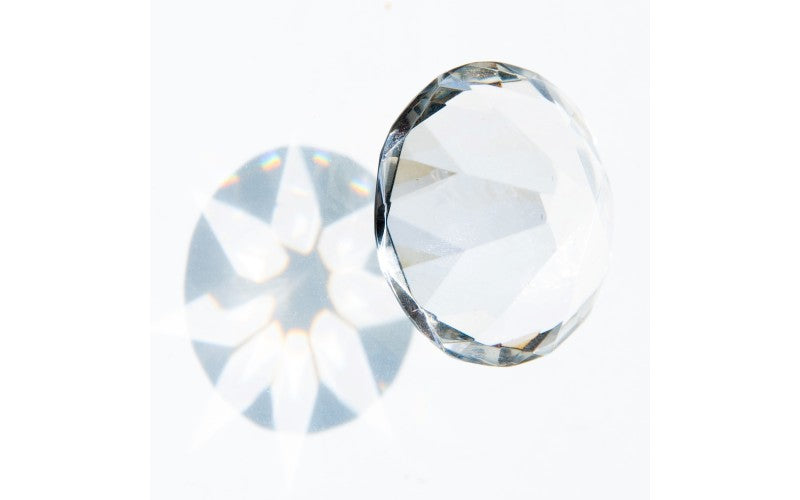Many of us love a bit of ‘bling’ and the best bling of all is of course a diamond, however for most of us our budget does not always stretch that far and so to still achieve that bit of sparkle we turn to a diamond substitute. But which one? There are a few to choose from, let us look at the three most popular and which I think makes the best alternative.
Cubic Zirconia is the cubic crystalline form of zirconium dioxide. It is a manmade material, mostly colourless but can be made in a variety of colours. When viewed with the naked eye cubic zirconia resemble a diamond. On the Moh’s scale of hardness a cubic zirconia measures in at 8.5 (diamond being 10); making it hard enough to be scratch resistant but not scratch proof, certainly durable enough for everyday wear. A colourless cubic zirconia exhibits a very intense play of light producing a radiant finish.
Cubic Zirconia should not be confused with Zircon which is a natural gemstone. Zircon is a rare gem (estimated to be 4.4 billion years old) and so making it more expensive than the synthesized cubic zirconia.
Moissanite occurs naturally but most Moissanite today is laboratory created. Natural Moissanite was first discovered in 1893 by a French scientist called Henri Moissan. Moissanite is made from the mineral silicon carbide. Unfortunately, silicon carbide is exceedingly rare so all Moissanite is created using a synthetic version. Moissanite has a high rating on the Moh’s scale of hardness coming in at 9.25 making it a durable option. Unlike Cubic Zirconia, Moissanite is rarely completely white or totally transparent. The process involved in making Moissanite can create a slight tint of colour, usually green, yellow, or grey, there may even be some slight internal flaws and imperfections.
Crystal can refer to many things but in relation to jewellery Crystal will either be the naturally occurring Quartz gemstones or manmade leaded glass beads. Synthetic Crystals are composed of sand (silica), soda ash (sodium carbonate) and lead. The lead is what provides the sparkle found in crystals used in jewellery. The way a crystal is manufactured also contributes to its brilliance, Swarovski, probably the most famous brand of crystal in the world, use a patented process to cut and polish the glass to produce a radiant finish. On the Mohs scale of hardness Crystals have a typical rating of 6 making it more susceptible to scratches.
So, which one? Personally, I think cubic zirconia is the front runner when it comes to a diamond replacement. To the naked eye it is virtually impossible to distinguish between a flawless diamond and cubic zirconia. The high hardness rating of cubic zirconia makes them durable and suitable for everyday wear and with no cleavages (the splitting of a gemstone) during manufacture, they are less likely to crack or chip. Dispersion is when the light passes through and scatters throughout a material. The dispersion is high in a cubic zirconia meaning maximum sparkle and a cubic zirconia is always flawless - it is created in a lab so no imperfections.
Best of all though cubic zirconia is affordable, guilt free shopping…yeah! And speaking of guilt free, since cubic zirconia is manmade there is no risk of your gem being a ‘conflict’ stone. This is a term associated with diamonds that are illegally traded to fund conflict in war torn areas.

